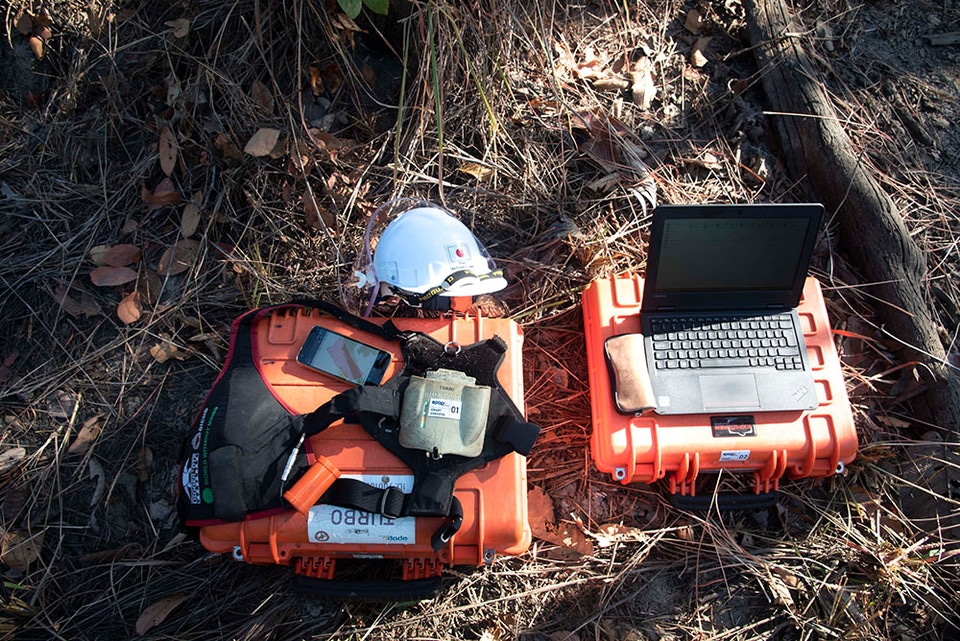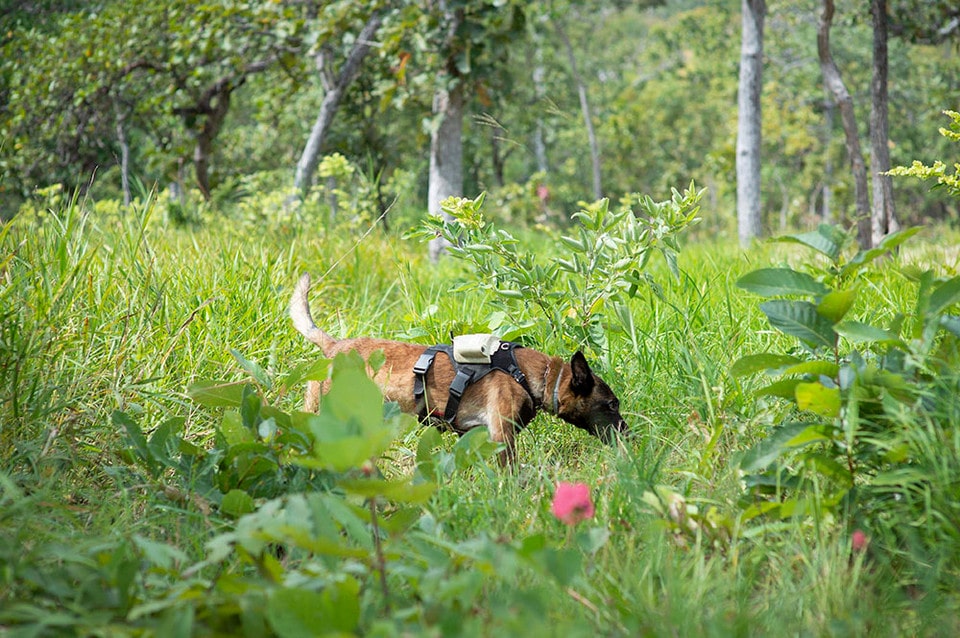GICHD field tests show promising results.
APOPO is perhaps best known for having developed an innovative method to train African giant pouched rats to detect landmines and tuberculosis using their extraordinary sense of smell. With decades of experience in training rodents, the organization further expanded to training canines in 2017, when APOPO opened a dog training center in Cambodia. Results show, that including both these detection animals, the overall efficiency of the clearance process can be doubled on some tasks and even tripled on others, compared to using conventional methods alone.
APOPO continues to strive for recognition through published research studies and proven operational results, and last year the Geneva International Centre for Humanitarian Demining (GICHD), published the results of a pilot project, titled “Field Trials of the SMART System and Technical Survey Dogs in Cambodia“. Despite the time it took to develop the most effective technique for long-leash and free-range search dogs and the challenges with incorporating the tracking system, after a six-month working period it was clear that the technique works faster than expected. In landmine affected areas, the report concluded that survey using the TSD with SMART system methodology is highly efficient, when used in the appropriate context. This report is a huge milestone for APOPO and increasing effectiveness and efficiency in the sector will not only provide considerable cost savings it will help to further reduce tragic accidents, getting people back on safe ground as quickly as possible.
It is widely recognized in the Mine Action sector that to increase effectiveness, appropriate low-cost survey methods are needed to further reduce the hazardous areas, to confirm the presence or absence of landmines. APOPO began this pilot project to prove the concepts of i) using our Technical Survey Dog teams on landmine-affected areas, a legacy of the 30-year internal conflict that took place in Cambodia; and ii) cluster munition remnants in eastern Cambodia, where these bombs that were dropped during the Vietnam War and are still threatening the rural communities living there. During the project, the TSD team surveyed 2,227,100 m2 of suspected hazardous area and detected 262 landmines, cluster munition remnants and other explosive remnants of war (ERW). The project took place over 18 months, from July 2019 to the end of December 2020.
The method involves specially equipped Technical Survey Dogs (TSD) that carry out long-leash and free-range searches covering large areas, locating the presence of explosives without the need for time-consuming and expensive vegetation cutting beforehand. The focus is not just on locating individual mines or cluster munitions, but on searching an area in general to see if it might be contaminated. They are trained to sit down at least a meter before the target scent keeping them out of harm’s way. Besides the environmental factors, this approach significantly accelerates the survey process. The track and trace system carried by the dogs allows a better management of the process and leads to a more accurate definition of the boundaries in the hazardous area, saving enormous amounts of time and funds.

The SMART (Swiss Mine Action Reduction Tool) system was developed by the GICHD and Digger DTR with the initial funding for the sets coming from the Swiss foundation World Without Mines. The pilot project to evaluate this system in Cambodia in collaboration with the Cambodian Mine Action Center (CMAC), was financially supported by the City of Geneva (Ville de Geneve) and the GICHD. This SMART backpack on the TSD is a satellite-based system that includes a harness with GPS, camera and speaker, controlled with a mobile application used by the handler. It records the TSD’s movements, showing its tracks in real time and calculating the percentage of the area covered, which is essential in technical survey and informs the evidence-based land release decisions.

TSD are highly driven search dogs that differ from standard Mine Detection Dogs in their ability to search a longer range, navigating vegetation and terrain obstacles. TSD are used prior to clearance, together with the initial historical and geographical surveys that are carried out to assess the probability of landmines and other explosives. The use of dogs for technical survey is paving the way for more effective clearance without compromising safety.
Read the full report here.
APOPO Mine Action Cambodia is incredibly grateful to all our dedicated partners and donors,
with their help and continued focus we want to ensure we finish the job in the shortest possible timeframe.







